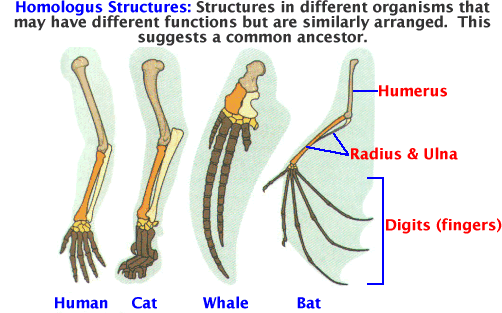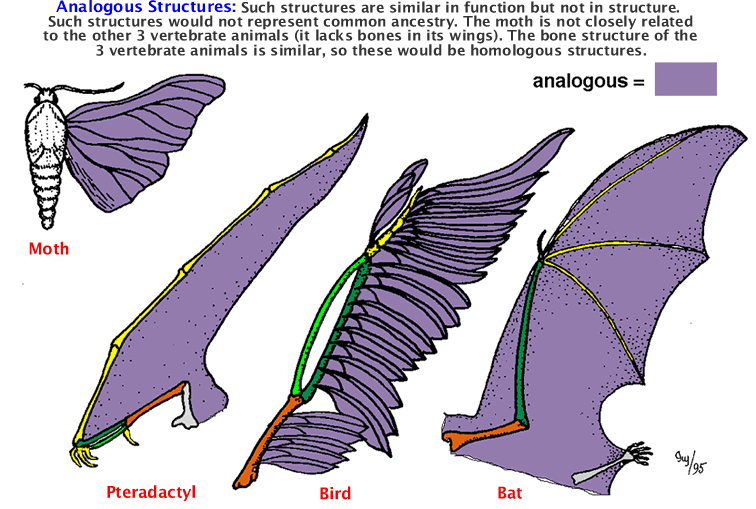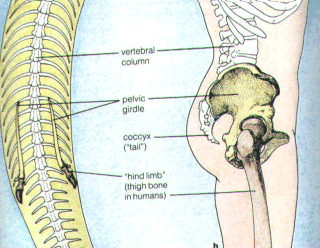
A) Homologous Structures:
Evidence of relationships between groups of organisms has historically been determined by structural similarities called homologous structures. Such structures have a similarity in the way they are put together, although their arrangement and use by the organism may be quite different. The similarities suggest a common ancestor. Note that the bones of the forearm are present in the 4 organisms in the diagram below. This is the part that can suggest a common ancestor. The arrangement of these forearm bones is fairly different, helping the respective organisms to move in their own, unique way. The arrangements of bones in these 4 organisms has changed (via adptation) to meet the requirements placed on these organisms within their different niches.

Some organisms show analagous structures when they are compared. These structures have similar uses (wings for flight or gliding in the organisms seen below) but the structure is very different, suggesting they have no closely related ancestor. In the example below, the wings of the moth are analgous to the other 3 vertebrate animals.

Vestigial organs are those that had a major function in an ancestor but do not have such a function in the present day species. With time, if an organ or structure is no longer needed, natural selection may reduce the size of the organ until it completely disappears from the species or is very reduced in size. It is suggested that some vestigial organs may remain in a reduced state because they have a minor function within the body.
Examples:
a) Appendix in humans
b) Vestigial hindlimbs in some large snakes suggests their ancestors were 4-legged.
c) Whales: The present day Right whale has vestigial hindlimbs. Fossils of ancient whales provide evidence that the earlier ancestors of whales were 4-legged.

Some organisms quickly develop a resistance to chemicals that could kill them. This is a form of direct evidence for natural selection that can be observed today. Populations of bacteria, insects and weeds reproduce quickly and produce numerous offspring in short amounts of time. In each population, there will be individuals who are easily killed by a chemical, those who show some resistance to a chemical, and a few who may be very resistant to the chemical. This clearly demonstrates variation within the species. When exposed to the "toxic" chemical, most of the individuals lacking resistance will die. Those with a genetic resistance survive and reproduce. Their offspring will show a greater range of resistance (although individuals lacking resistance will still be born). The population has adapted or shifted towards more resistance. On further exposure to this chemical, those lacking resistance again die while those that are resistance survive and reproduce. The population again shifts towards more resistance. After many generations (this doesn't take long in bacteria and insects), most of the population becomes resistant to the toxic chemical used against it. We then say that the species has become adapted for resistance. We then have to find a new chemical treatment to treat the infection or fight the insect pests anew.